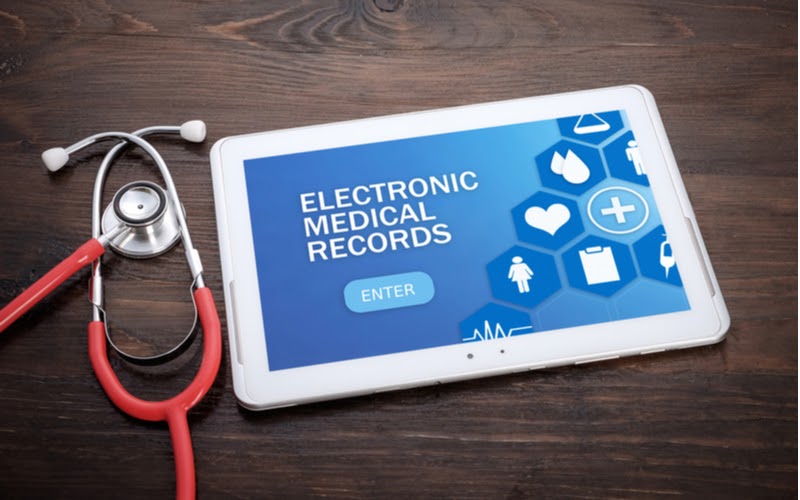The number of healthcare providers offering telehealth services surged in response to COVID-19. At the hieght of the pandemic, up to 95 percent of providers offered telehealth options.
The rush to add or expand telehealth services was not without its challenges. For many providers, implementing digital signatures was a key source of concern. How could they protect themselves and their patients? What HIPAA rules apply to e-signatures? Do the laws vary from state to state?
Here’s what every health care provider needs to know about HIPAA’s e-signature requirements.
HIPAA is the acronym for the Health Insurance Portability and Accountability Act of 1996. Lawmakers passed HIPAA to explicitly protect patients’ rights to control their health information.
Over time, expansions to the law included additional provisions. Today, HIPAA dictates:
What Is HIPAA and Who Is Subject to It?
- That healthcare providers protect patient information from unauthorized third-party access
- When and how providers can share patient information with business associates
- That digital information be protected to the same standards as hard-copy information
- That healthcare providers document their compliance with HIPAA regulations
Almost everyone who engages with patients and their data must comply with HIPAA. This includes:
- Direct care providers such as medical clinics, hospitals, and doctors’ offices
- Long-term care facilities of all kinds
- Dentists and dental surgeons
- HMOs and other insurance providers
Business partners of any covered entity and medical supply and device resellers are also subject to HIPAA.

The Role of E-signatures in Healthcare
When HIPAA first went into effect, e-signatures were rare. Electronic Health Records (EHR) system adoption was growing. Still, the process was slow and was not yet mandated by the federal American Recovery and Reinvestment Act of 2013-2014, which dictated that all medical charts were converted to a digital format.
Slowly but surely, digital health records, prescriptions, and electronic signatures began to fit into the daily processes of healthcare institutions and medical businesses throughout the U.S. Patient medical records are now vastly dictated, transcribed, and stored digitally, patient permissions are sometimes given with electronic signatures, and even prescriptions are often e-signed and digitally sent to pharmacies.
But that’s where things can get complicated.
What HIPAA Rules Say About Electronic Signatures
As published, the HIPAA Security Rule does not contain any language about e-signatures. Lawmakers did originally intend to address the subject. All references to it were removed before publication, however.
Instead, the Department of Health and Human Services (HHS), which oversees HIPAA, published guidelines after the fact. Per those guidelines, electronic signatures:
legally binding
Must be legally binding under state law in the provider’s state
ESIGN Act
Must comply with the federal United States Electronic Signatures in Global and National Commerce (ESIGN) Act
UETA
Must comply with the federal Uniform Electronic Transactions Act (UETA), where applicable
Security standards
Must meet general HIPAA electronic safety and security standards
HIPAA Rules
May not violate HIPAA rules in any way when collected, used, or stored
Understandably, providers are often unclear on what this looks like in practice. To better understand these requirements, it is best to break them down into several categories:
- Compliance with the law
- Authentication and non-repudiation
- Control

Compliance With the Law
The first step to legal compliance for e-signatures has to do with patient consent. Patients must agree to use digital or electronic means when doing business with their provider. If they do not, then providers must work with them using hard-copy documents and signatures only.
Second, documents patients will e-sign must clearly state:
- The terms to which the signee agrees
- The signee’s intent in signing the document
- That signees have the option to receive a hard-copy or digital copy of the document at their request
Third, documents patients will e-sign must comply with federal and state laws. These lawn can vary from state to state. Providers should review the laws that apply to them to ensure their documents are in order before providing them to patients.
Authentication and Non-Repudiation
To protect users’ personal health information (PHI), providers must choose their e-signature software carefully. This includes digital signature technology that:
- Verifies the identity or souce location of the signer
- Uses private encryption keys to transmit documents securely
- Uses hash algorithms to lock documents
- Uses public decryption keys
- Uses hash algorithms to match both keys before delivering the signed document to the recipient
Has a verifiable auditing process
This type of system provides the detailed documentation providers need for HIPAA compliance. It also prevents tampering or changing of the document or signature after the fact.
This protection and documentation make e-signatures legally binding. It also enables them to stand up to HIPAA risk assessment scrutiny
It’s crucial that healthcare providers use an electronic signature software that enables third-party service for their digital signatures. This can ensure that they meet these standards and provide an extra layer of legal oversight and protection.
Foxit eSign uses the latest in digital signature technology, is SOC2 compliant, and HIPAA-certified. Reach out and see how we can help your medical institution streamline the paperwork process and remain compliant.

For HIPAA purposes, e-signed documents are viewed the same as hard-copy documents. Healthcare providers must apply the same high standards of control and protection to both.
First and foremost, this means storing documents on encrypted or otherwise protected servers and devices. It also entails securely discarding or destroying extra or no longer needed copies.
Finally, it applies to document retention, as well. HIPAA largely leaves document retention regulation to the states. Thus, providers should review and abide by their state’s documentation safety and retention standards.
e-Signature Technology
Today’s electronic signature software offers an array of options. E-signing can be as fast and easy as a single keystroke or the click of a mouse. Electronic signature options can be seamlessly built into documents and processes from start to finish.
Healthcare providers can build e-signature options into both front-of-house and back-of-house documents and processes. They can apply digital signatures with almost any device, streamlining workflows to unprecedented degrees.
How Digital Signatures Benefit Your Practice
The benefits of implementing digital signatures are vast. With the right planning and implementation, they can:
- Help you achieve and document HIPAA compliance
- Streamline your onboarding process
- Help your practice go paperless
- Protect yourself and your patients
- Reduce the time and costs associated with handling patient paperwork
- Reduce your document storage space and costs
- Reduce patient wait times
Together, these benefits reduce the strain on your staff. They increase efficiency and lower the likelihood of costly errors.
From your patients’ perspective, e-signatures make the paperwork part of their care take less time and go more smoothly. This allows them to feel in control and to feel like they are getting the most out of their time with you.

Getting the Most Out of e-Signatures
Perhaps you already use some form of e-signature at your practice. Maybe you aren’t confident in its HIPAA compliance. Or perhaps you aren’t seeing the benefits you know you should reap.
Maybe you have not yet taken the leap to integrate digital signatures into your practice. You want to, but you’re worried about legal compliance and liability.
In either case, you can gain the most benefits from e-signatures by getting help from digital signature solution experts. They can walk you through:
- How to design e-signable documents that match your brand
- How to use templates to save time and money
- How to access and sign documents from various places (e.g. email, browser, EHR system)
- How to create a document workflow that is user-friendly for both staff and patients
- How to train your staff to use the digital signature tools and resources available to them for maximum effect
- How to generate, store, and retrieve documents
- How mass-signing documents can save you time and money
- How to integrate e-signatures into programs you already use like Dropbox or Google docs
Digital signature experts can also help you:
- Assess your usage and needs
- Choose the most cost-effective plan
- Document your HIPAA compliance
Working with experts takes the stress and ambiguity out of electronic signatures, as well. Electronic signature solutions experts, such as Foxit eSign, have already calibrated their systems to comply with legal requirements and are HIPAA certified. They have done the hard work of ensuring that their products and processes are safe.
Healthcare providers can leverage that work by taking advantage of the turn-key solutions available to suit providers of every size and type.
Take the Next Step
If you are ready to implement HIPAA-compliant digital signatures or uplevel your current eSignature process, there has never been a better time. Schedule a demo or sign up for a free trial today and see what the best digital signature technology can do for your practice.











